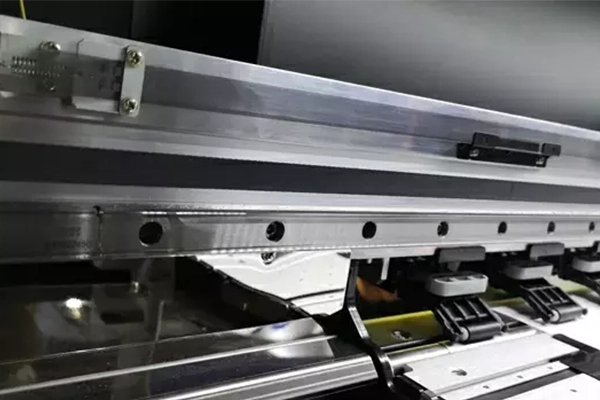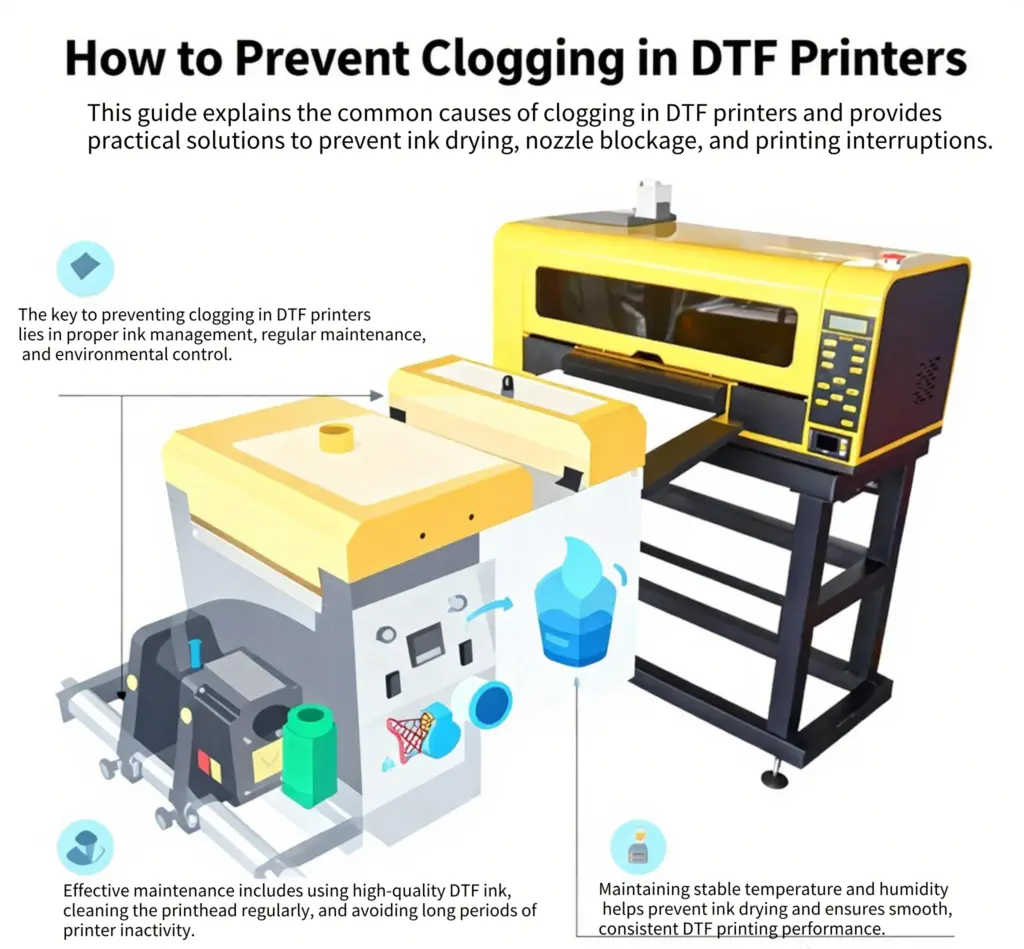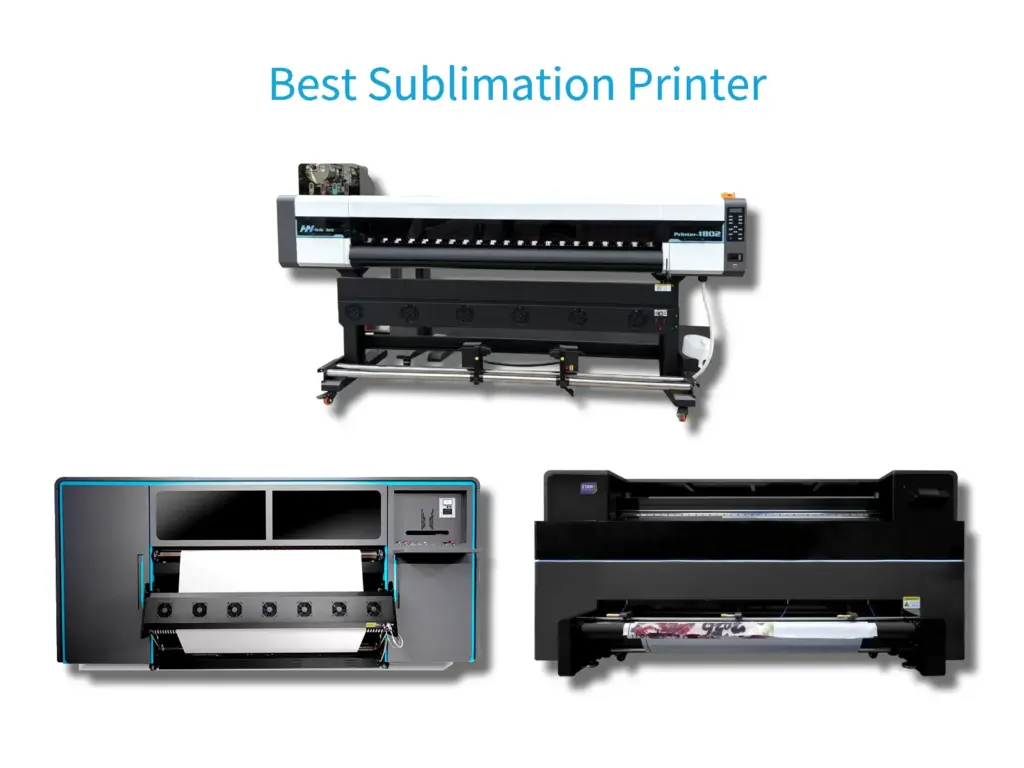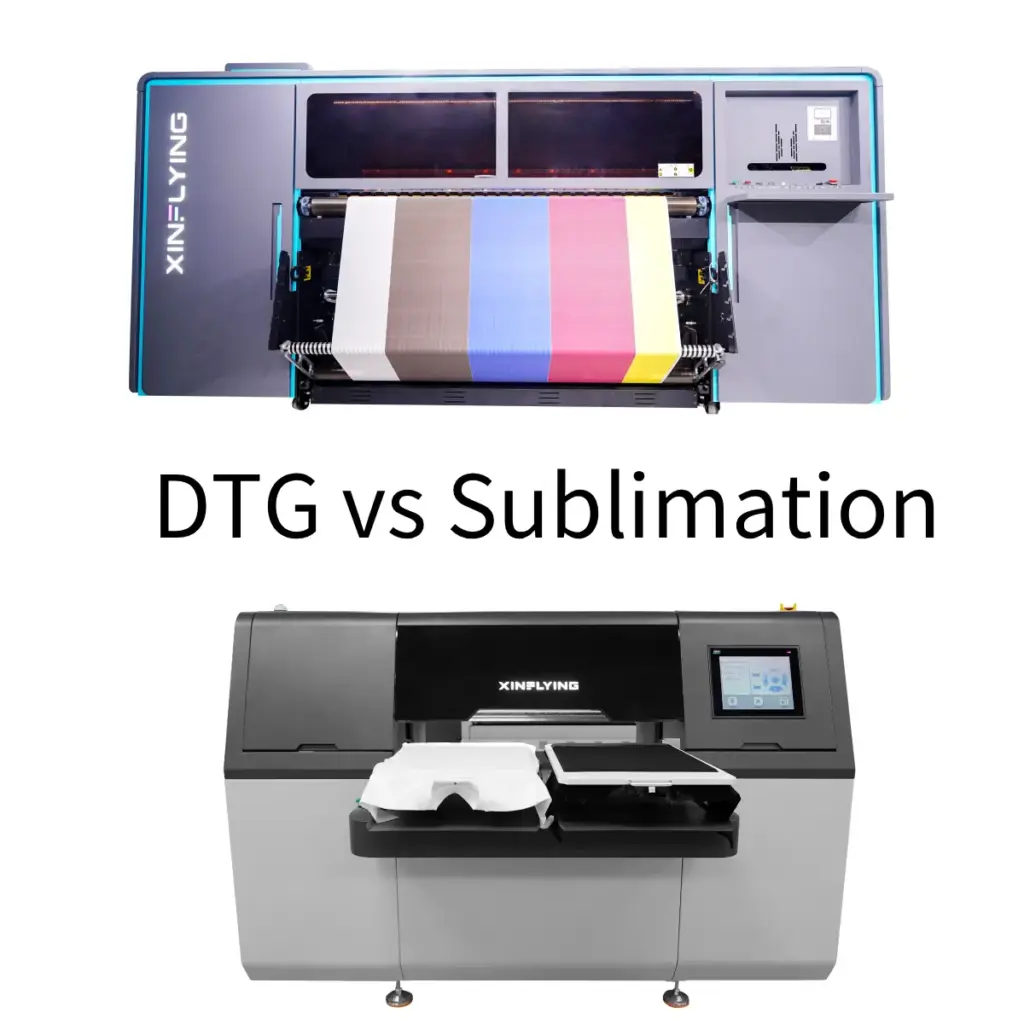Η εκτύπωση εξάχνωσης είναι μια δημοφιλής τεχνική που χρησιμοποιείται στον κόσμο της εκτύπωσης και της προσαρμογής. Περιλαμβάνει τη μεταφορά μελανιού σε ένα υπόστρωμα (όπως το ύφασμα) χρησιμοποιώντας θερμότητα και πίεση. Αυτή η μέθοδος οδηγεί σε ζωντανή, μακροχρόνιες εκτυπώσεις που είναι ιδανικές για προσαρμοσμένα σχέδια και εξατομίκευση. Σε αυτόν τον ολοκληρωμένο οδηγό, Θα βουτήξουμε βαθιά στις περιπλοκές της εκτύπωσης εξάχνωσης, καλύπτοντας τα πάντα από τα βασικά έως τις προηγμένες συμβουλές και τις τεχνικές αντιμετώπισης προβλημάτων.
Τι είναι η εκτύπωση εξάχνωσης?

Η εκτύπωση εξάχνωσης είναι μια διαδικασία όπου χρησιμοποιούνται ειδικά μελάνια εξάχνωσης για τη μεταφορά σχεδίων σε ένα υπόστρωμα, συνήθως υλικά με βάση τον πολυεστέρα. Το μελάνι εκτυπώνεται για πρώτη φορά σε χαρτί εξάχνωσης και στη συνέχεια μεταφέρεται στο ύφασμα χρησιμοποιώντας ένα πίεση θερμότητας. Η θερμότητα και η πίεση προκαλούν την εξάσκηση του μελανιού, μετατρέποντάς το σε αέριο που διεισδύει στις ίνες του υφάσματος, με αποτέλεσμα μια μόνιμη και ζωντανή εκτύπωση.
Τι χρειάζομαι για εκτύπωση εξάχνωσης?
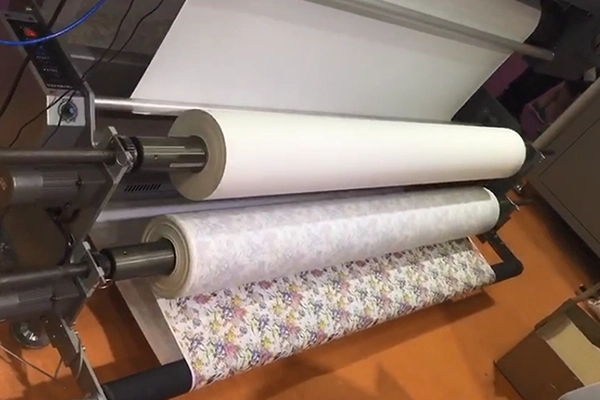
Όταν ξεκινάτε με εκτύπωση εξάχνωσης, Υπάρχουν μερικά βασικά εργαλεία και υλικά που θα χρειαστείτε:
- Πρέσσα θερμότητας: Χρησιμοποιείται ένας τύπος θερμότητας για την εφαρμογή θερμότητας και πίεσης στο χαρτί και το ύφασμα εξάχνωσης, Βοηθώντας στη μεταφορά του μελανιού στο υλικό.
- Εκτυπωτής εξάχνωσης: Ένας εξειδικευμένος εκτυπωτής που χρησιμοποιεί μελάνια εξάχνωσης για την εκτύπωση σχεδίων σε χαρτί εξάχνωσης.
- Χαρτί εξάχνωσης: Ειδικά επικαλυμμένο χαρτί που συγκρατεί το μελάνι εξάχνωσης πριν μεταφερθεί στο ύφασμα.
- Μελάνια εξάχνωσης: Αυτά τα μελάνια είναι ειδικά διαμορφωμένα για να υποβάλλονται όταν υποβάλλονται σε θερμότητα, με αποτέλεσμα ζωντανές και μακροχρόνιες εκτυπώσεις.
- Σωστό ύφασμα: Τα υφάσματα πολυεστέρα λειτουργούν καλύτερα για την εκτύπωση εξάχνωσης καθώς επιτρέπουν στο μελάνι να διεισδύει στις ίνες, με αποτέλεσμα φωτεινές και ανθεκτικές εκτυπώσεις.
Πώς λειτουργεί ένας εκτυπωτής εξάχνωσης?
Εάν είστε νέοι στην εκτύπωση εξάχνωσης, Εδώ είναι ένας απλοποιημένος οδηγός για αρχάριους βήμα προς βήμα για την εξάχνωση:
- Δημιουργία Σχεδιασμού: Ξεκινήστε δημιουργώντας το σχέδιό σας σε έναν υπολογιστή χρησιμοποιώντας λογισμικό γραφικού σχεδιασμού. Αυτός ο σχεδιασμός θα είναι η εικόνα ή τα έργα τέχνης που θέλετε να εκτυπώσετε στο ύφασμα σας.
- Εκτύπωση σε χαρτί εξάχνωσης: Μόλις το σχέδιό σας είναι έτοιμο, Χρησιμοποιήστε έναν εκτυπωτή εξάχνωσης για να τον εκτυπώσετε σε ειδικά επικαλυμμένο χαρτί εξάχνωσης. Ο εκτυπωτής θα μεταφέρει τα μελάνια εξάχνωσης στο χαρτί με ακρίβεια.
- Εφαρμογή του σχεδίου σε ύφασμα: Για να μεταφέρετε το σχέδιο στο ύφασμα, Τοποθετήστε το χαρτί εξάχνωσης με το τυπωμένο σχέδιο που βλέπει προς τα κάτω στο ύφασμα. Βεβαιωθείτε ότι ο σχεδιασμός τοποθετείται σωστά στο ύφασμα.
- Πρέσσα θερμότητας: Χρησιμοποιήστε μια θερμότητα για να εφαρμόσετε θερμότητα και πίεση στο ύφασμα και στο χαρτί εξάχνωσης. Αυτή η διαδικασία προκαλεί τα μελάνια εξάχνωσης στο χαρτί να μετατραπούν σε αέριο και να διαπεράσουν τις ίνες υφάσματος, δημιουργώντας μια ζωντανή και μόνιμη εκτύπωση.
- Ψύξη και φινίρισμα: Αφήστε το ύφασμα να κρυώσει πριν αφαιρέσετε το χαρτί εξάχνωσης. Η διαδικασία ψύξης βοηθά το σετ μελάνης και τηρούν σωστά το ύφασμα. Μόλις κρυώσει, Αποσυνδέστε προσεκτικά το χαρτί εξάχνωσης για να αποκαλύψετε την πολύχρωμη και ανθεκτική εκτύπωση στο ύφασμα.
Ακολουθώντας αυτά τα απλά βήματα, Μπορείτε να δημιουργήσετε επιτυχώς προσαρμοσμένα σχέδια και εξατομικευμένες εκτυπώσεις χρησιμοποιώντας έναν εκτυπωτή εξάχνωσης.
Εφαρμογή εκτύπωσης εξάχνωσης
Εκτύπωση εξάχνωσης είναι μια ευέλικτη και αποτελεσματική μέθοδος εκτύπωσης που βρίσκει εφαρμογές σε διάφορες βιομηχανίες και ρυθμίσεις. Ακολουθούν μερικές κοινές εφαρμογές εκτύπωσης εξάχνωσης:
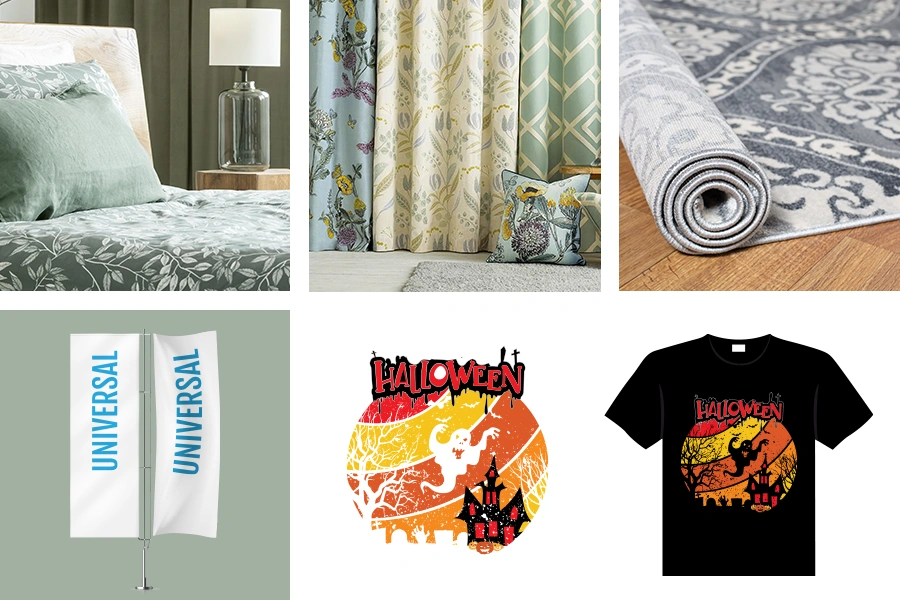
Ενδύματα και ρούχα
Η εκτύπωση εξάχνωσης χρησιμοποιείται ευρέως στη βιομηχανία ενδυμάτων για τη δημιουργία προσαρμοσμένων υφασμάτων, ταπετσαρία, και σεντόνια για Ένθασε σχεδιασμένα ρούχα, είδη σπορ, και στολές. Η διαδικασία επιτρέπει ζωντανές και μακροχρόνιες εκτυπώσεις σε πολυεστέρα υφάσματα, καθιστώντας το ιδανικό για αθλητικά ενδύματα και εξαγριωμένα φανέλες.
Διακόσμηση και αξεσουάρ στο σπίτι
Από εξατομικευμένα μαξιλάρια και κουβέρτες προς την προσαρμοσμένες κούπες και σουβέρ, Η εκτύπωση εξάχνωσης χρησιμοποιείται για τη δημιουργία μοναδικών ειδών διακόσμησης στο σπίτι και αξεσουάρ. Η διαδικασία επιτρέπει λεπτομερείς και πολύχρωμες εκτυπώσεις σε διάφορα υποστρώματα, Ενίσχυση της αισθητικής των εσωτερικών χώρων.
Διαφημιστικά προϊόντα
Η εκτύπωση εξάχνωσης είναι δημοφιλής για την παραγωγή διαφημιστικών προϊόντων όπως μπρελόκ, επιθέματα ποντικιού, και μπλουζάκια με λογότυπα της εταιρείας ή επωνυμία. Οι εκτυπώσεις υψηλής ποιότητας και οι επιλογές προσαρμογής καθιστούν την εκτύπωση εξάχνωσης μια ελκυστική επιλογή για διαφημιστικά εμπορεύματα.
Σήμανση και πανό
Η εκτύπωση εξάχνωσης χρησιμοποιείται επίσης στη δημιουργία του σήμανση, πανό, και σημαίες Λόγω της ικανότητάς του να παράγει ζωντανά και εντυπωσιακά γραφικά. Οι εκτυπώσεις είναι ανθεκτικές και ανθεκτικές στις καιρικές συνθήκες, καθιστώντας τα κατάλληλα για εσωτερικές και εξωτερικές εφαρμογές.
Εξατομικευμένα δώρα
Η εκτύπωση εξάχνωσης είναι ιδανική για τη δημιουργία εξατομικευμένων δώρων όπως πλαίσια, κούπες, και θήκες τηλεφώνου. Η διαδικασία επιτρέπει την αναπαραγωγή περίπλοκων σχεδίων και φωτογραφιών με εξαιρετική αναπαραγωγή και λεπτομέρεια χρώματος.
Αθλητικός εξοπλισμός και αξεσουάρ
Η εκτύπωση εξάχνωσης χρησιμοποιείται συνήθως για τη διακόσμηση αθλητικού εξοπλισμού και αξεσουάρ όπως κράνη, γάντια, και τσάντες. Οι εκτυπώσεις είναι ανθεκτικές και ανθεκτικές στη φθορά, καθιστώντας τα ιδανικά για εφαρμογές που σχετίζονται με τον αθλητισμό.
Πλεονεκτήματα και μειονεκτήματα εκτύπωσης εξάχνωσης
Η εκτύπωση εξάχνωσης προσφέρει μια σειρά από οφέλη και μειονεκτήματα που είναι απαραίτητα για να ληφθούν υπόψη όταν αποφασίζουμε για την εφαρμογή της. Ας εξερευνήσουμε τα πλεονεκτήματα και τα μειονεκτήματα της εκτύπωσης εξάχνωσης.
Πλεονεκτήματα της εκτύπωσης εξάχνωσης
- Η εκτύπωση εξάχνωσης παράγει αιχμηρά, λεπτομερής, και μακροχρόνιες εκτυπώσεις που αντιστέκονται στην εξασθένιση με την πάροδο του χρόνου.
- Αυτή η μέθοδος μπορεί να εκτυπώσει άψογα σε πολυεστέρα και άλλα συνθετικά υλικά, επιτρέποντας τις ευέλικτες επιλογές προσαρμογής.
- Τα μελάνια εξάχνωσης δημιουργούν ζωντανά και διαρκή χρώματα που παραμένουν ζωντανή πλύση μετά το πλύσιμο.
- Η εκτύπωση εξάχνωσης επιτρέπει περίπλοκα και εξατομικευμένα σχέδια, καθιστώντας το ιδανικό για την προβολή ατομικής δημιουργικότητας.
Μειονεκτήματα εκτύπωσης εξάχνωσης
- Η εκτύπωση εξάχνωσης λειτουργεί καλύτερα σε πολυεστέρα και μπορεί να μην είναι κατάλληλη για φυσικές ίνες όπως το βαμβάκι.
- Λόγω του εξειδικευμένου εξοπλισμού και των αναλώσιμων που απαιτούνται, Η εκτύπωση εξάχνωσης μπορεί να μην είναι οικονομική για μικρά ή εφάπαξ έργα εκτύπωσης.
- Η λειτουργία ενός εκτυπωτή εξάχνωσης και του Press Heat απαιτεί τη γνώση και την κατάρτιση για να εξασφαλίσει τα βέλτιστα αποτελέσματα.
- Προσφέροντας ένα ευρύ φάσμα χρωμάτων, Η εκτύπωση εξάχνωσης μπορεί να μην ταιριάζει με τη ποικιλία χρωμάτων ορισμένων παραδοσιακών μεθόδων εκτύπωσης.
- Η εκτύπωση εξάχνωσης είναι πιο αποτελεσματική σε υφάσματα πολυεστέρα φωτός, Περιορισμός της εφαρμογής του σε σκοτεινά ή μη πολιτικά υποστρώματα.
Συμβουλές και κόλπα για εκτύπωση εξάχνωσης επιτυχίας
Για να εξασφαλιστεί η επιτυχής εκτύπωση εξάχνωσης, Εξετάστε τις παρακάτω συμβουλές και κόλπα:
- Ρύθμιση του σωστή θερμοκρασία και πίεση Στο θερμότητας σας είναι ζωτικής σημασίας για τη βέλτιστη μεταφορά του μελανιού.
- Χρησιμοποιώντας το Διόρθωση προφίλ χρωμάτων Για ακριβή αναπαράσταση χρωμάτων θα έχει ως αποτέλεσμα ζωντανές και αληθινές εκτυπώσεις.
- Προ-θεραπευτικό ύφασμα Για καλύτερη απορρόφηση μελανιού μπορεί να βελτιώσει την ποιότητα και τη μακροζωία των εκτυπώσεων.
Αντιμετώπιση προβλημάτων κοινά ζητήματα
- Εάν οι εκτυπώσεις σας είναι ξεθωριασμένο ή εμφανιζόμενο θαμπό, Δοκιμάστε να αυξήσετε τη θερμοκρασία και την πίεση στο πίεση σας για να εξασφαλίσετε τη σωστή μεταφορά μελανιού.
- Θολές εικόνες μπορεί να προκύψει από ακατάλληλες ρυθμίσεις εκτύπωσης. Ελέγξτε τις ρυθμίσεις του εκτυπωτή σας και βεβαιωθείτε ότι ο σχεδιασμός εκτυπώνεται με την κατάλληλη ανάλυση.
- Ανομοιογενής μεταφορά του σχεδίου πάνω στο ύφασμα μπορεί να προκληθεί από ανομοιογενή πίεση στην πρέσα θερμότητας. Ρυθμίστε την πίεση και εξασφαλίστε ομοιόμορφη κατανομή για μια συνεπή εκτύπωση.
Πώς να διατηρήσετε τον εκτυπωτή εξάχνωσης
- Καθαρισμός του τύπου θερμότητας: Καθαρίστε τακτικά την πίεση σας, σκουπίζοντας τις επιφάνειες και αφαιρώντας οποιοδήποτε υπόλειμμα για να εξασφαλίσετε τα βέλτιστα αποτελέσματα εκτύπωσης.
- Αναπλήρωση κασέτας μελάνης εξάχνωσης: Κρατήστε τα φυσίγγια μελάνης εξάχνωσης σας γεμάτα για να αποφύγετε την εξάντληση του μελανιού στη μέση ενός έργου. Ακολουθήστε τις οδηγίες του κατασκευαστή για επαναπλήρωση.
- Αποθήκευση χαρτιού εξάχνωσης σωστά: Αποθηκεύστε το χαρτί εξάχνωσης σας σε δροσερό, ξηρό μέρος για να αποτρέψετε τη ζημιά στην υγρασία και να εξασφαλίσετε την ποιότητα των εκτυπώσεών σας.
Τι είναι ένας καλός εκτυπωτής εξάχνωσης?
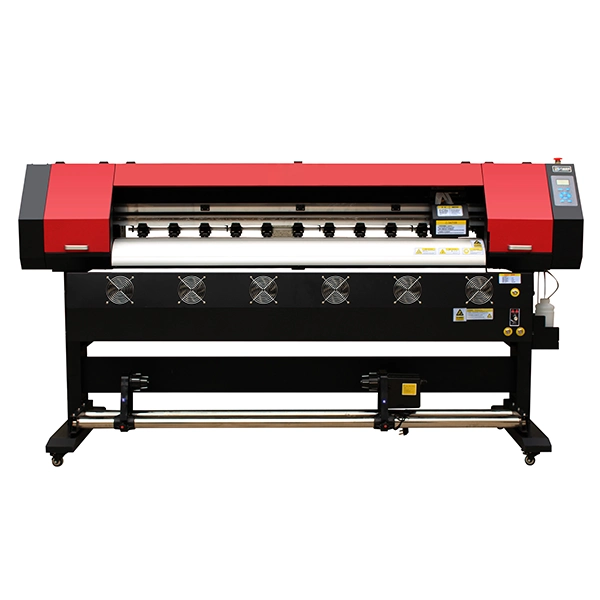
Κατά την επιλογή ενός εκτυπωτή εξάχνωσης, Υπάρχουν διάφοροι παράγοντες που πρέπει να εξεταστούν για να εξασφαλίσετε τις βέλτιστες εκτυπώσεις απόδοσης και ποιότητας. Ακολουθούν μερικά βασικά χαρακτηριστικά που πρέπει να αναζητήσετε σε έναν καλό εκτυπωτή εξάχνωσης:
- Τεχνολογία εξάχνωσης βαφής: Επιλέξτε έναν εκτυπωτή ειδικά σχεδιασμένο για εκτύπωση εξάχνωσης βαφής για να εξασφαλίσετε τη συμβατότητα με μελάνια εξάχνωσης και χαρτί.
- Ανάλυση εκτύπωσης: Αναζητήστε έναν εκτυπωτή με δυνατότητες υψηλής ανάλυσης (τουλάχιστον 1200 dpi) για να επιτευχθεί αιχμηρές και λεπτομερείς εκτυπώσεις.
- Συμβατότητα μελανιού: Βεβαιωθείτε ότι ο εκτυπωτής είναι συμβατός με μελάνια εξάχνωσης και διαθέτει ξεχωριστά κασέτες μελάνης χρώματος για αποτελεσματική εκτύπωση.
- Χειρισμός των μέσων ενημέρωσης: Επιλέξτε έναν εκτυπωτή με ευρύ φάσμα συμβατότητας μέσων για να φιλοξενήσετε διάφορα μεγέθη χαρτιού και τύπους για ευέλικτες επιλογές εκτύπωσης.
- Ταχύτητα και αποτελεσματικότητα: Εξετάστε την ταχύτητα εκτύπωσης του εκτυπωτή για να εξασφαλίσετε αποτελεσματική παραγωγή χωρίς να διακυβεύσετε την ποιότητα της εκτύπωσης.
- Ενσωμάτωση λογισμικού: Αναζητήστε έναν εκτυπωτή που ενσωματώνεται απρόσκοπτα με λογισμικό εξάχνωσης για εύκολη επεξεργασία και εκτύπωση σχεδιασμού.
- Η σχέση κόστους-αποτελεσματικότητας: Εξετάστε το αρχικό κόστος επένδυσης, καθώς και τα συνεχιζόμενα έξοδα συντήρησης και μελάνης, Για να προσδιορίσετε τη συνολική σχέση κόστους-αποτελεσματικότητας του εκτυπωτή.
- Φιλική προς το χρήστη διεπαφή: Επιλέξτε έναν εκτυπωτή με φιλική προς το χρήστη διεπαφή και διαισθητικά χειριστήρια για εύκολη λειτουργία, Ειδικά για αρχάριους.
συμπέρασμα
Συμπερασματικά, Η εκτύπωση εξάχνωσης είναι μια ευπροσάρμοστη μέθοδος εκτύπωσης και υψηλής ποιότητας που είναι ιδανική για προσαρμοσμένα σχέδια και εξατομίκευση. Με την κατανόηση της διαδικασίας, εξοπλισμός, και συμβουλές για επιτυχία, Μπορείτε να επιτύχετε επαγγελματικές και μακροχρόνιες εκτυπώσεις. Για όλες τις ανάγκες εκτύπωσης εξάχνωσης, θεωρώ XinFlying, Ένας κορυφαίος κατασκευαστής εκτυπωτών κλωστοϋφαντουργικών εκτυπωτών, μελάνια, και χαρτί που μπορεί να προσαρμοστεί για τις επιχειρηματικές σας εφαρμογές. Επιλέξτε λύσεις εκτύπωσης εξάχνωσης υψηλής ποιότητας από το Xinflying για εξαιρετικά αποτελέσματα.

